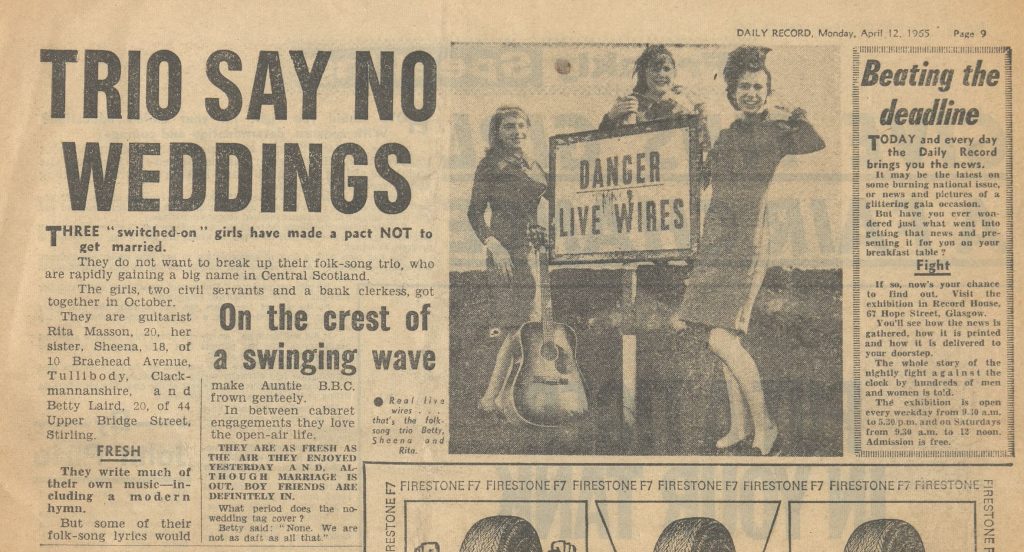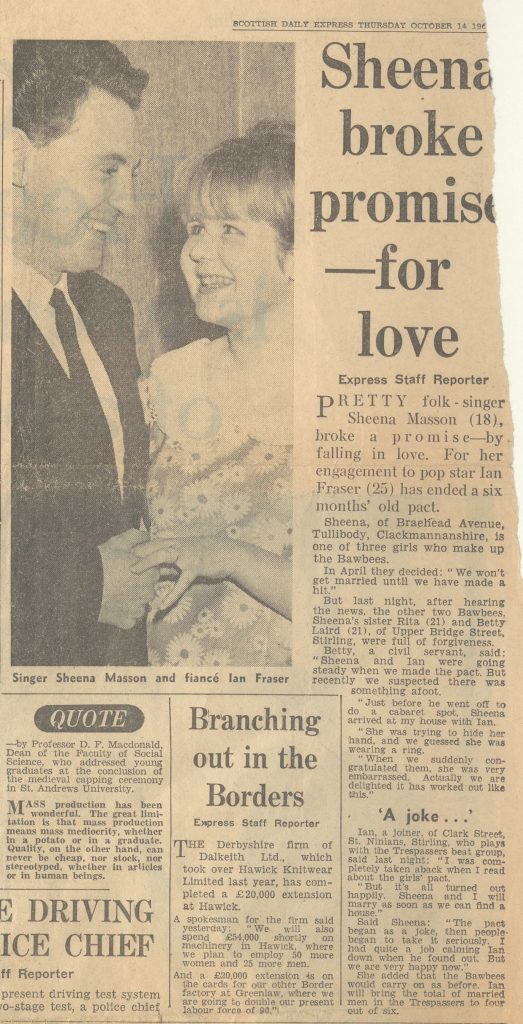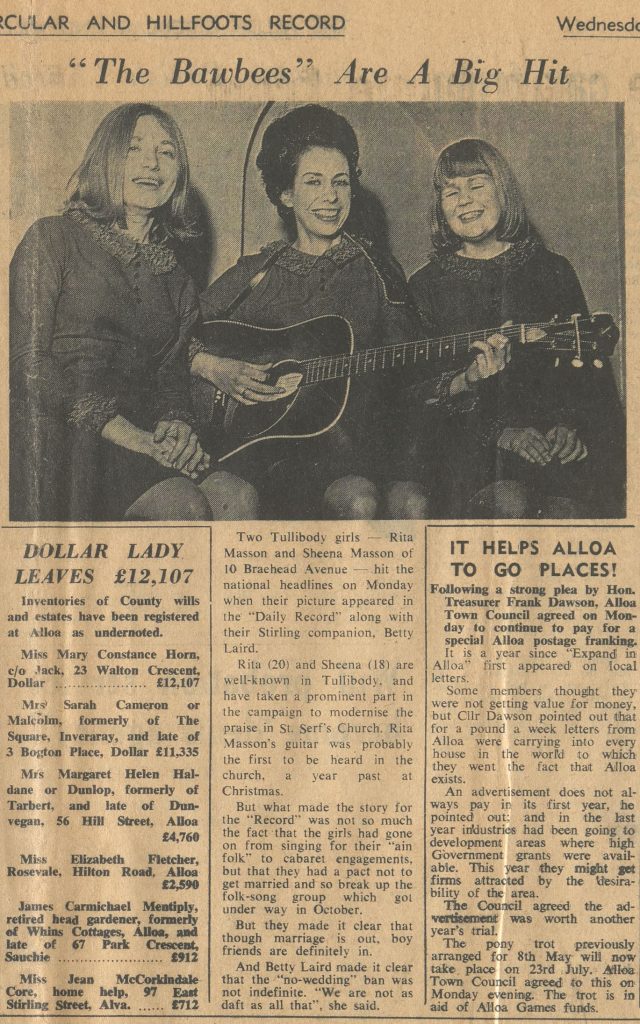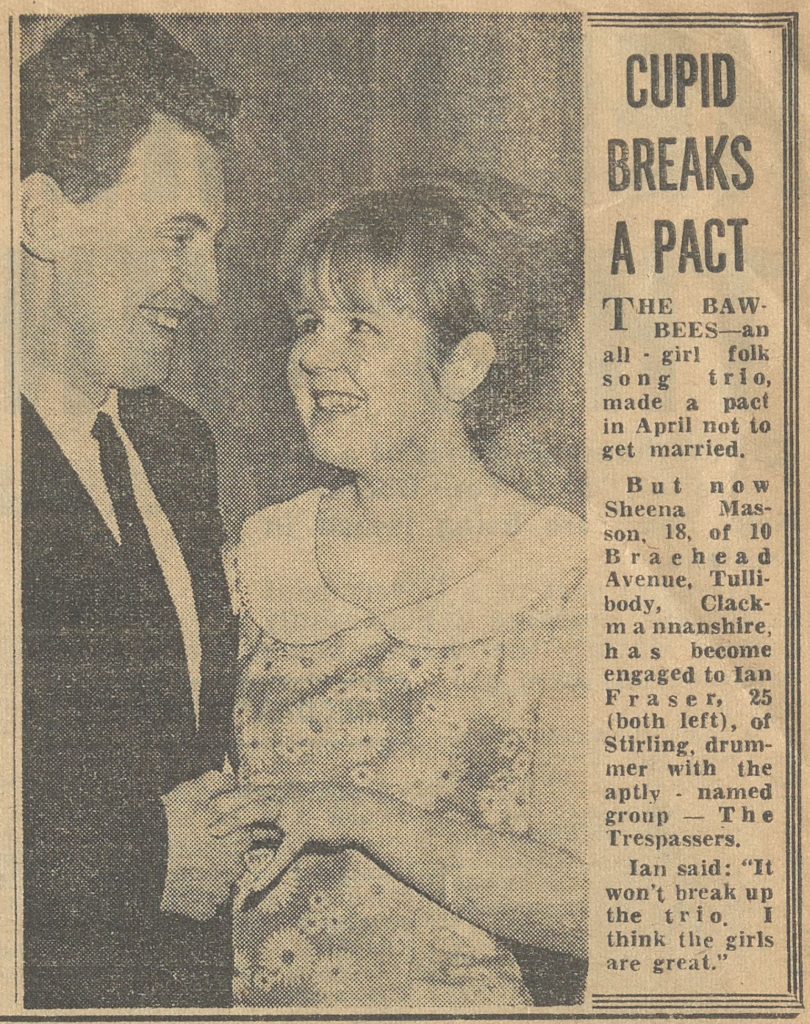“No Weddings, Just Folk Songs”: The Story of The Bawbees, Stirling’s Short-Lived Folk Pact
SPMA Stories #1
In the autumn of 1964, three young women from Stirling and Clackmannanshire formed a folk trio that would soon become a charming fixture in the central Scottish music scene. The Bawbees, which was made up of guitarist Rita Masson (20), her younger sister and singer Sheena Masson (18), and their friend Betty Laird (20), weren’t just gaining attention for their harmonies and clever lyrics. They were making headlines for a bold decision: a pact to avoid marriage so they wouldn’t break up the band.
Rita and Sheena, both from Tullibody, were already well-known in their local community with their involvement in modernising church music at St. Serf’s and Betty, from Stirling, completed the group. The Bawbees’ embodied part of a wider 1960s cultural shift that saw tradition giving way to a new kind of youth-led creativity, and by April 1965, newspapers were calling them “switched-on girls” and noting their growing fame across the region. Despite holding down day jobs as civil servants and clerks, the trio wrote their own songs, some of which with cheeky lyrics that, according to the Daily Record, might have made “Auntie B.B.C. frown genteelly.”

But their most headline-grabbing move wasn’t musical. In spring 1965, the trio declared they had agreed not to marry, choosing instead to focus on making a name for themselves in folk music. The message was clear: “Although marriage is out,” they said at the time, “boyfriends are definitely in,” it was a playful pushback against expectations, however, it didn’t last long. By October of the same year, the newspapers were buzzing again when Sheena broke the pact when she’d gotten engaged to Ian Fraser, a 25-year-old drummer in the Stirling based pop group The Trespassers. Ian had met Sheena when he was the drummer with The Ramrods, the precursor to The Trespassers, so this progression of their relationship wasn’t entirely unexpected. The other two members recalled how she’d arrived trying to hide her engagement ring before bashfully admitting the news. “Actually, we are delighted it has worked out like this,” her bandmates said with good humour and grace, even Ian himself promised: “It won’t break up the trio. I think the girls are great.”



The Bawbees’ story, short as it may have been, captures something vital about Stirling’s music scene in the 1960s: the spirit of youth, the ambition of women carving out their own space in music, and the blend of tradition and rebellion that made folk music resonate. Their legacy now lives on in the Stirling University archives, reminding us that even a pact made in good fun can become a lens on a cultural moment.
Alicia Napolitano, MSc Heritage student, University of Stirling

